Right now, over 10% of all the species on Earth are facing potential extinction over the course of the 21st century. I've been talking so far about what's been causing it- today we'll be talking about the newest extinction pressure on the block- anthropogenic climate change.
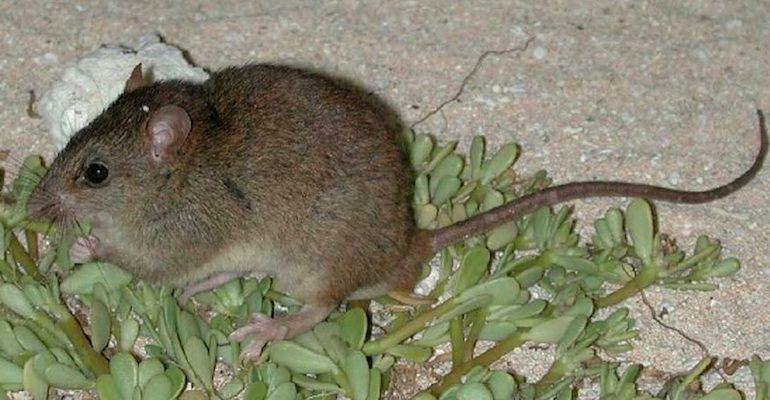
The Bramble Cay melomys, the first mammal driven extinct by climate change. Last seen in 2007, the sole Australian island this species lived on was barely above sea level, and what sea level rise we've seen so far was enough to wipe it out. [Image source]
Before we get started with that, however, I forgot an important extinction pressure caused by invasive species in the last post- hybridization. When an invasive species encounters a related native species, sometimes they can interbreed, leading to the destruction of the native species that way. This often occurs when humans do something like building a bridge across a river that had long separated two populations of a species that had evolved apart. Sometimes a new hybrid species is produced, sometimes the offspring are sterile and the native species is driven extinct, and sometimes the native species is simply absorbed into the invasive species, only leaving a few genes behind as proof. The last is what happened to Neanderthals- humanity simply absorbed them.
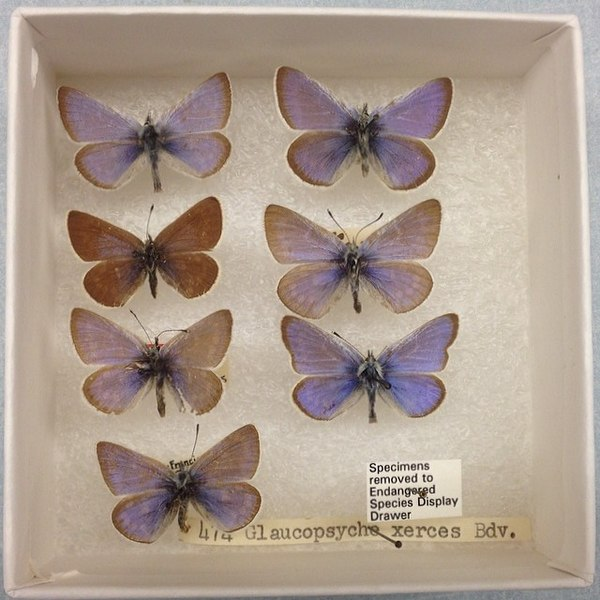
The Xerces Blue, the first, though not the last, American butterfly driven extinct by urban development. Murdered by San Francisco. Last seen in 1953.[Image source]
Climate change, like invasive species, is more of a metacategory of extinction pressure. It applies extinction pressures in a variety of different ways. Given the relatively young age of the study of climate change, as well as the fact that climate change's effects are increasing at a higher and higher rate, there haven't been as many attributed extinctions to this one yet.
The first- and deadliest- climate change related extinction pressure is habitat loss. Deserts are spreading rapidly around the globe. Ice caps and glaciers are melting, inundating low lying areas and killing off species dependent on the ice- polar bears are one of the most heavily threatened species by climate change.
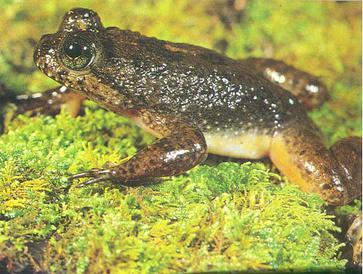
The Southern Gastric Brooding Frog, driven extinct along with its cousin, the larger Northern Gastric Brooding Frog, in the 1980s by habitat destruction and the frog killing chytrid fungus Bd. The gastric brooding frogs got their name from the bizarre habit of mother frogs raising their young in their stomachs. There is hope here, though- Australian scientists preserved ample genetic material, and are working on resurrecting the species. Embryos have already been cloned, though no tadpoles have come of it yet- but scientists are optimistic. [Image source]
Next off is simple temperature rise. Many species have quite specific temperature ranges they prefer, and simply can't cope well with rising temperatures. Coral reefs are an example of this- when their temperatures rise too high, they expel the algae that provide them with food in what is known as a bleaching event. In addition, the changes in temperature and weather pattern are causing a mismatch in seasonal signals- some species are coming out of winter dormancy earlier than others now, causing the power balance in ecosystems to change.
Another very weird example is sea turtles- the gender of sea turtles is entirely determined by the temperature of the sand they're laid in, not by genetics at all. (You can't actually tell the sex of a sea turtle with a genetic test!) This is resulting in grossly disproportionate numbers of female births as the temperature of the sand they lay their eggs in increases, putting more pressure on species that really don't need it.
Changes in precipitation levels are also a huge issue. Many species are going to be dried out or drowned as climate change alters global rainfall patterns. On top of that, increased numbers of drought lead to increased numbers and severity of forest fires, which pose an obvious threat to threatened species.
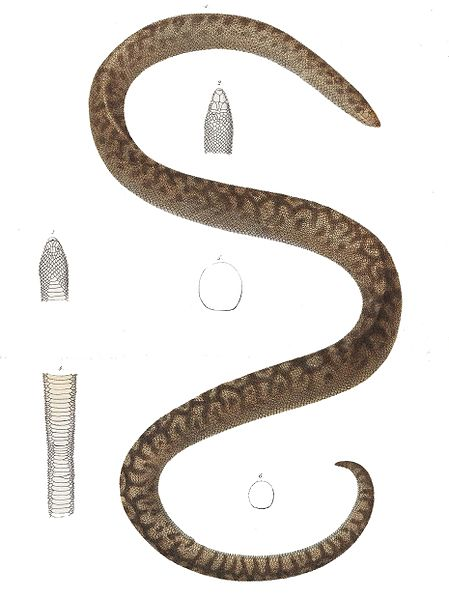
The Round Island Burrowing Boa. Last seen in 1975. Driven extinct by habitat loss thanks to overgrazing by invasive goats and rabbits.[Image source]
This next one is a bit of an oddball- ocean acidification. This isn't caused by rising temperatures, but rather by increased CO2 levels in the atmosphere, just like the global mean temperature rise itself. When raindrops travel through the atmosphere, they tend to pick up C02 atoms, which react with the water and form carbonic acid. All rain is in fact acid rain. The level of acidity, however, has been growing rapidly, increasing the acidity levels of the ocean.
The effects of ocean acidification are drastic. Many animals in the ocean- molluscs, corals, and more- all create hard shells for themselves. The most common material used is calcium carbonate. As the ocean gets more acidic, however, the carbonic acid deposited by rain reduces the available carbonate, making it harder and harder for the young of these species to get their shells started- and those that do get shells started often have thin, weak shells that provide little to no protection. Many of these shells and corals are even starting to see some minor erosion by acidity levels. Given that many of these shelled species are low on the food chain, this poses huge risks to oceanic ecosystems. The damage to coral reefs is also devastating- coral reefs are the most productive and biodiverse areas in our oceans.
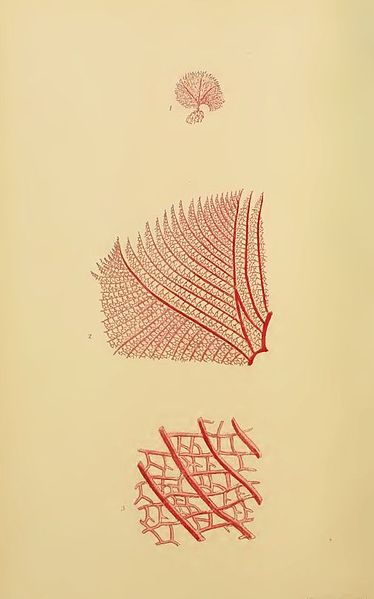
Bennet's Seaweed, one of the rare protists known to have been driven extinct by human activity. This algae grew only in Australia, and had its habitat destroyed by dredging. Last seen prior to 1916. [Image source]
Finally on this list- though there are definitely other extinction pressures applied by climate change- is migration damage. Species are being forced to migrate by the effects of climate change. This challenges them in a few ways. First off, many species can't migrate quickly enough, and are left to die in new, hostile environments. Many species can't migrate at all, due to geographical or biological limitations. Those species that can migrate are forced to compete against the native species in the ecosystems they've moved into- they've been forced into being invasive species. And while some invasive species take over and go nuts, 90% of the time they fail to take root.
There are a few different modes of this. Rising sea levels are forcing species inland, for instance. Increasing temperatures are altering altitudinal zonation as well. If you've ever climbed a mountain, you might have noticed that different plants and animals are present at different altitudes. As global temperatures increase, those zones are being forced upwards. Some species can't keep up with the pace, and others are being forced above the treeline. Some even have their preferred temperature/precipitation zone moved above the actual height of the mountain! In the mountainous western Amazon rainforest all of this is seen frequently.
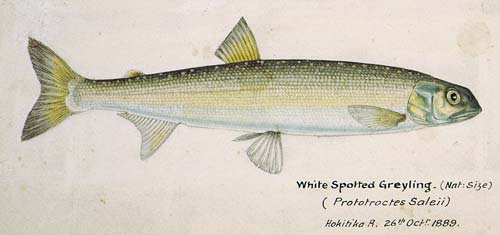
The New Zealand grayling, like salmon, spawned in lowland freshwater streams and grew to maturity in the ocean. Driven extinct by overfishing by humans and competition from invasive trout in their breeding streams. Last seen in the early 1930s.[Image source]
While climate change is just revving up to full speed, and hasn't killed quite as many species as some of the other extinction pressures, this is only a matter of time. Scientists have already identified hundreds of species directly threatened by climate change, ranging from humble algae to the mighty polar bear. And where we've found hundreds of species threatened, there are certainly thousands more- including a great many species that have never even been discovered.
Bibliography:
The Sixth Extinction, by Elizabeth Kolbert
The Song of the Dodo, by David Quammen
The Ocean of Life, by Callum Roberts
The Emerald Planet, by David Beerling
Wonderful Life, by Stephen Jay Gould
Full House, by Stephen Jay Gould
Life, by Richard Fortey
https://en.wikipedia.org/wiki/Xerces_blue
https://www.theguardian.com/environment/2016/jun/14/first-case-emerges-of-mammal-species-wiped-out-by-human-induced-climate-change
https://www.livescience.com/61368-turtle-skew.html
https://en.wikipedia.org/wiki/Round_Island_burrowing_boa
http://science.sciencemag.org/content/348/6234/571.full
https://en.wikipedia.org/wiki/Extinction
https://en.wikipedia.org/wiki/Holocene_extinction
https://en.wikipedia.org/wiki/Bramble_Cay_melomys
https://en.wikipedia.org/wiki/Extinction_risk_from_global_warming
https://en.wikipedia.org/wiki/Altitudinal_zonation
http://rspb.royalsocietypublishing.org/content/royprsb/280/1750/20121890.full.pdf
https://en.wikipedia.org/wiki/Vanvoorstia_bennettiana
https://en.wikipedia.org/wiki/New_Zealand_grayling
https://en.wikipedia.org/wiki/List_of_recently_extinct_reptiles
https://en.wikipedia.org/wiki/List_of_recently_extinct_amphibians
https://en.wikipedia.org/wiki/List_of_recently_extinct_bird_species
https://en.wikipedia.org/wiki/List_of_recently_extinct_molluscs
https://en.wikipedia.org/wiki/List_of_recently_extinct_insects
https://en.wikipedia.org/wiki/List_of_recently_extinct_fishes
https://en.wikipedia.org/wiki/List_of_recently_extinct_mammals
https://en.wikipedia.org/wiki/List_of_recently_extinct_plants

